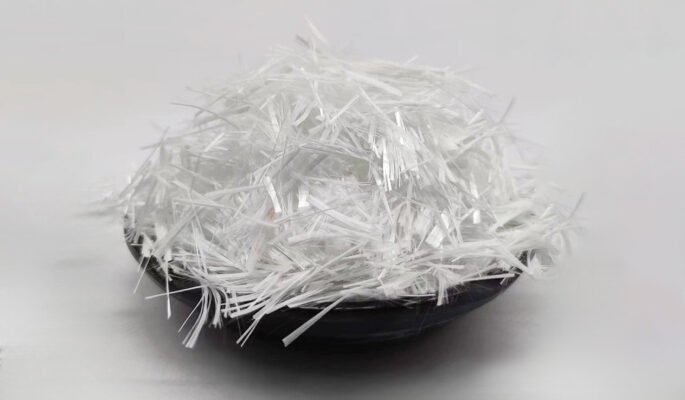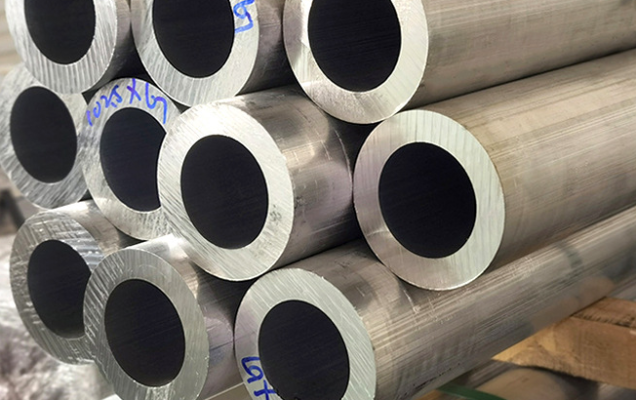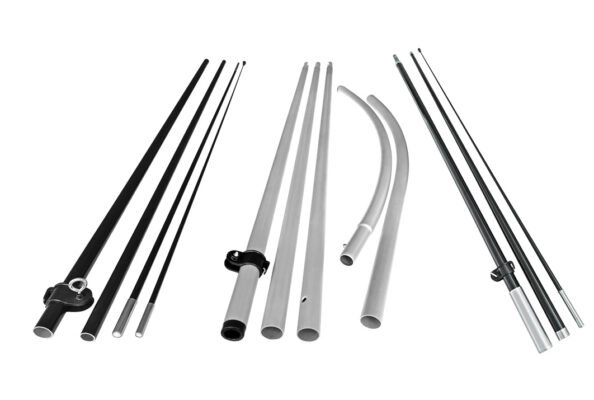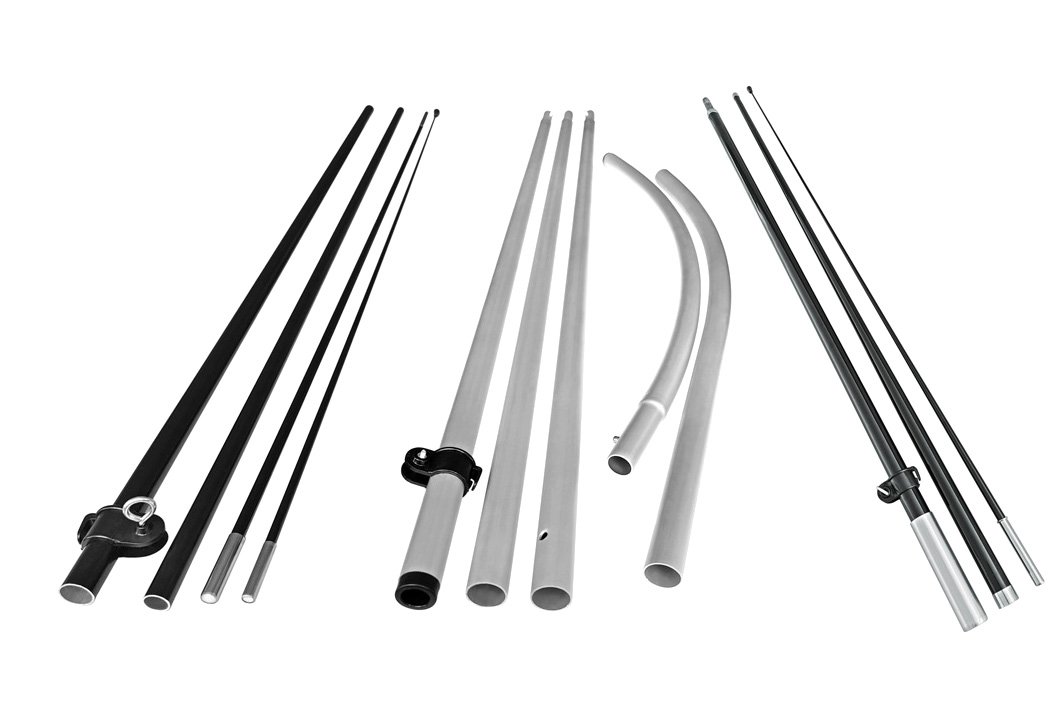Knowledge
Aluminium Pole vs Fiberglass Pole in Feather Flag: An In-Depth Comparison
When it comes to choosing the right pole for your feather flag, the debate often boils down to two contenders: aluminium and fiberglass. Both materials have their unique strengths and weaknesses, making the choice not as straightforward as it might seem. Let’s dive into an in-depth comparison to help you make an informed decision for your next purchase.
Feature | Aluminium | Fiberglass |
Weight | lightweight 2.7g/cm3 | lightweight 2.49g/cm3 |
Cost | Moderately | Cost-effective |
Strength | High strength but not easy to bend | Not easy to break but not suitable for shock loads |
Eco-friendly | recyclable | Not easily recyclable |
Corrosion resistance | very good corrosion resistance | Long term acid resistance and short term alkali resistance |
Dielectric | high electrical conductivity | Low dielectric constant |
Young’s Modulus | 68 GPa | 76.0 GPa |
What are fiberglass flagpoles and aluminum flagpoles?
Fiberglass Flagpoles

Crafted through a unique process, fiberglass flagpoles originate from glass fibers. These fibers are produced by spinning molten glass, derived from heating minerals like limestone or silica sand to their melting points. Once in a liquid state, this material is pushed through minuscule openings, termed brushings, forming fine filaments. These filaments undergo a coating process with a special chemical and are then assembled into roving, which is the primary material in our fiberglass flagpoles.
Aluminum Alloy Flagpoles

Turning to our aluminum flagpoles, they utilize the 6000 series aluminum alloy, known for its integration of magnesium and silicon as the main alloying elements. This composition not only offers superior mechanical properties but also provides notable resistance to corrosion, making these flagpoles a durable choice.
Constituent element | Minimum | Maximum |
Al | 95.85% | 98.56% |
Mg | 0.80% | 1.20% |
Si | 0.40% | 0.80% |
Fe | 0 | 0.70% |
Cu | 0.15% | 0.40% |
Cr | 0.04% | 0.35% |
Zn | 0 | 0.25% |
Ti | 0 | 0.15% |
Mn | 0 | 0.15% |
Durability and Strength

Aluminium Poles: Aluminum poles are synonymous with durability and robustness, making them a reliable choice for various environments.
Their inherent strength means they can withstand rough handling and adverse weather conditions, from gusty winds to heavy rains, without bending or breaking.
This resilience ensures a long lifespan, offering a solid return on investment. However, it’s important to note that their rigidity, while beneficial for longevity, may limit their flexibility, which could be a drawback in scenarios where some degree of bending is beneficial.
Fiberglass Poles: Fiberglass poles, renowned for their flexibility, are an excellent choice for conditions where resilience to bending is crucial.
This flexibility allows them to sway and recover in windy conditions without succumbing to damage. It’s this give-and-take nature that makes fiberglass poles less likely to snap or break, ensuring their longevity in dynamic weather.
However, their flexibility also means that they might not offer the same level of resistance to direct impacts as aluminum poles. This aspect should be considered when choosing poles for environments where they might face significant physical stress or impact.
Weight and Portability
Aluminium Poles: Renowned for its lightweight nature, aluminum is the cornerstone of these poles’ design, ensuring they are not just portable, but also incredibly easy to handle.
This becomes particularly pivotal for those who find themselves constantly on the move, setting up at various venues such as bustling trade shows or dynamic sporting events. The ease of transportation and rapid setup of these aluminum poles reduces logistical stress, offering a reliable and efficient solution for mobile displays.
Fiberglass Poles: Fiberglass poles take lightness to the next level, often surpassing their aluminum counterparts in weight efficiency. This superior lightness translates into an unmatched ease of portability, making them a perfect choice for individuals who are perpetually mobile.
Whether it’s for an on-the-go marketer, an event coordinator frequently transitioning between locations, or a sports team traveling for tournaments, these fiberglass poles offer a hassle-free transport solution. Their lightweight construction doesn’t compromise on durability, providing a resilient option for frequent use in varied environments.
Cost Consideration
Aluminium Poles: Aluminum poles are a cost-effective option, offering an ideal compromise between affordability and durability. This makes them a highly attractive choice for budget-conscious consumers, particularly those who require reliable but cost-efficient solutions for their flag display needs.
Their affordability does not compromise their quality, ensuring that users get robust and lasting performance at a more accessible price point. Aluminum poles are thus favored for both personal and professional settings where cost management is a priority, without sacrificing the integrity and functionality of the product.
Fiberglass Poles: On the other hand, fiberglass poles are positioned at a higher price range. This increased cost is justified by their enhanced flexibility and the more intricate manufacturing process involved. Fiberglass poles cater to a market segment that values advanced features, such as higher resilience to bending and environmental stressors.
Their construction, involving more sophisticated materials and techniques, reflects in their pricing. Ideal for situations where the poles might face extreme conditions or where longevity and less frequent replacements justify the initial investment, fiberglass poles are an investment in quality and advanced technology.
Aesthetic Appeal
Aluminium Poles: The sleek and modern appearance of aluminum poles is not just about aesthetics; it’s a reflection of contemporary design sensibilities. These poles boast a naturally bright and clean look, enhancing their surroundings with a touch of elegance.
Additionally, aluminum’s resistance to corrosion is a significant advantage, ensuring that its aesthetic appeal is preserved over time. This makes aluminum poles an excellent choice for those who value both appearance and durability, especially in settings where visual impact is as important as practical functionality.
Fiberglass Poles: Fiberglass poles offer a unique advantage in terms of aesthetic customization. Available in a wide array of colors and finishes, they provide an opportunity to align with specific branding or thematic requirements.
This versatility is particularly useful for businesses or events where color coordination is crucial. Whether it’s matching a company’s logo or complementing the theme of an event, fiberglass poles can be tailored to meet specific aesthetic needs, adding a personalized touch to their functionality.
Their ability to blend in or stand out as required makes them a popular choice for those who prioritize visual harmony and brand consistency.
Environmental Impact
Aluminium Poles: Aluminum’s recyclability is a significant environmental advantage, making it a sustainable choice for eco-conscious consumers. The ability to recycle aluminum means reduced waste and a lower carbon footprint over the lifecycle of the poles.
However, it’s important to consider the environmental cost of aluminum’s production. The mining and processing of aluminum are energy-intensive processes, often involving significant carbon emissions and resource consumption. While aluminum poles are durable and can be recycled, their initial environmental impact is something to bear in mind.
Fiberglass Poles: Fiberglass poles, though less recyclable than aluminum, offer their own set of environmental benefits. The long lifespan of fiberglass reduces the need for frequent replacements, indirectly lessening environmental impact through reduced manufacturing and transportation emissions over time.
However, the production of fiberglass itself involves the use of chemicals and energy, which can be a concern for those looking to minimize their ecological footprint. While they might not offer the same recyclability as aluminum, their durability and extended usability make them a viable option for those prioritizing long-term environmental efficiency.
Conclusion
In the end, the choice between aluminium and fiberglass poles for feather flags comes down to your specific needs and preferences. Aluminium offers strength, durability, and cost-effectiveness, while fiberglass excels in flexibility, lightweight design, and aesthetic options. Consider your environment, usage frequency, budget, and style preferences before making your choice.
